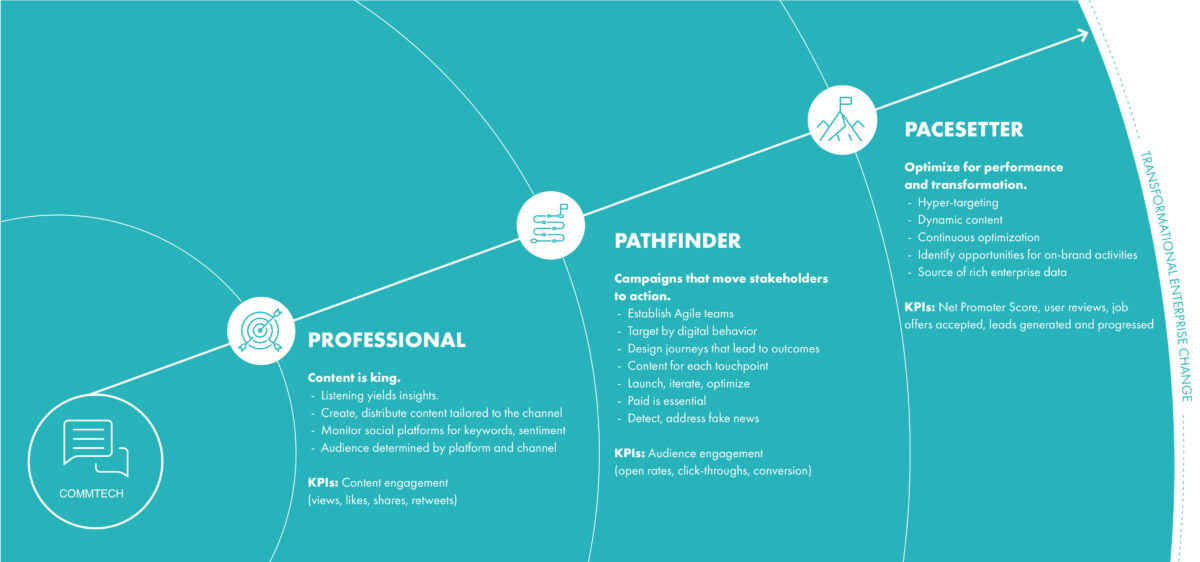CommTech represents and requires a new mindset – that the work of Communications is not limited to messaging and storytelling in pursuit of shaping opinion and fostering good will. Rather, our work can shape the actual behavior of the company and the people who matter to it — moving them from belief to action to confidence to advocacy. Furthermore, our work can foster a web of relationships with and around our firms and the people they comprise by turning seemingly random connections into addressable networks. Therefore, CommTech knowledge and facility will be critical success factors for all Comms roles. The Comms team will jointly own hard KPIs (such as recruitment, sales and compliance) with other functions, and their insights will inform the business strategies and choices of Marketing, Sales, HR and Operations.
CommTech is a mindset, but it’s also a journey. As part of The CCO as Pacesetter, Page as developed three-stage journeys called Progression Paths that lay out how CCOs can advance their work in four critical dimensions of their role: brand stewardship, culture change, societal value creation, and CommTech. These begin at the Professional level and progress to Pathfinder and, finally, to Pacesetter, which is where the work is highly systematized across the organization, and goes beyond the creation of highly effective campaigns to the ongoing transformation of the organization. For more on these Progression Paths, please see https://paths.page.org.
Let us take you through the three stages of a CommTech team:

PROFESSIONAL: Content is king.
PATHFINDER: Campaigns that move stakeholders to action.
PACESETTER: Optimize for performance and transformation
To put a little more flesh on those bones:
Get audiences to see our message
Focus on editorial production per Channel
Editorial Content Creators
Focus on monitoring what people say about our brand on Social Media
Identify when it happens
Audience is determined by platform: focused on reaching as many people as possible on each platform (Twitter, Linkedin, News etc.)
Content Engagement (Views, Clicks, etc.)
Give audiences all the content elements they need to act.
Focus on identifying risks and opportunities for our campaigns & brand
Early warning system
Audience definition & segmentation based on bigger groups
Audience Engagement
Find the most effective way to get audiences to act
Focus on identifying and leveraging insights into our audience’s needs and wishes
Anticipation based on patterns
Audience definition based on personal behavior of individuals in audience segments
Business outcomes and costs per business outcome (cost per conversion etc.)